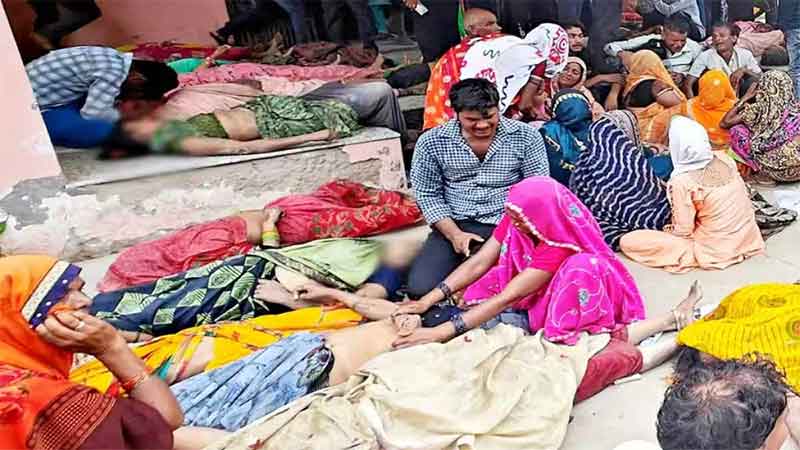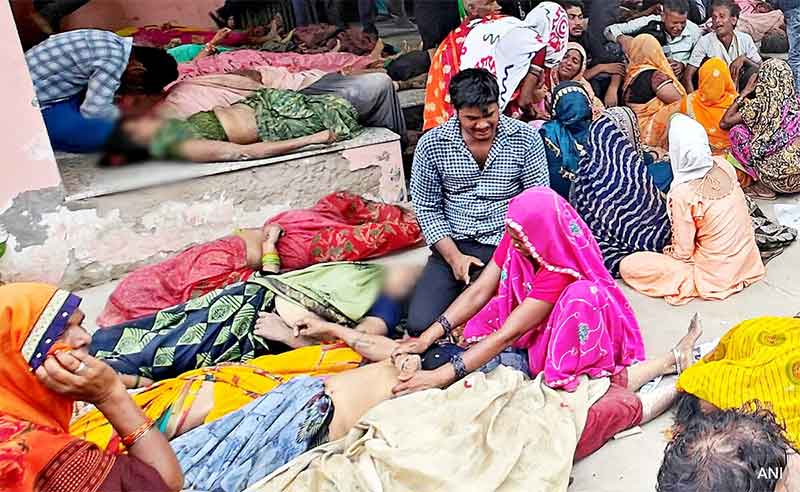
Road accidents kill 1.3 million people in a year in the world. While this is a shockingly big loss in itself, the overall burden for society is much higher at several levels, particularly in terms of serious injuries which apart from being very painful can also disrupt the life of a very large number of families.
In fact the number of non-fatal injuries and disabilities caused by road accidents is more than 25 times higher than fatalities. This has been estimated at between 20 to 50 million, or approximately 35 million, by the World Health Organization at the world level for one year.
In other words about 10,000 persons in world either die or else suffer injury or disability on any given day due to rod accidents. Every hour 416 people die or suffer injury or disability due to road accidents.
In addition a very large number of stray animals experience painful injuries and deaths caused by road accidents for which statistics not available.
Subscribe to Our Newsletter
Get the latest CounterCurrents updates delivered straight to your inbox.
As each serious injury, death and fatality adversely affects at least one family or an average of five persons, we may say that on average about 185 million people are adversely affected by road accidents in one year, or 1850 million (1.8 billion) in one decade. In other words, over a decade almost one in four persons in world either experiences or is adversely affected by a road accident. If we include rail, boat and other transport accidents, the number would be higher still.
In the middle of this massively distressing scene one good news is that whenever well-planned, many-sided efforts have been made, it has been possible to bring down road accidents significantly in several places. Hence if a very sincere worldwide effort is made, it should be possible to reduce road mishaps by about a half within about five years or so in many places, particularly those places which presently have a very high accident rate. If this happens, then it will be possible to save about 650,000 human lives per year and prevent about 1750,000 injuries and varying levels of disabilities in a year, compared to the present rates of fatal and non-fatal injuries caused by road accidents.
One of the important ways in which distress caused by road accidents can be reduced is by ensuring in various ways that proper speed limits are observed for various stretches of roads and highways.
Secondly, various steps can be taken to minimize the possibilities of anyone driving under the influence of alcohol or psychoactive substances. Alcohol is responsible for many more accidents than is often recognized. Liquor sale close to highways should not be allowed.
Road traffic as well as road-conditions should be improved in significant ways. Road repairs should be taken up more promptly, particularly during the rainy season. Danger points should be clearly identified, and remedial actions taken over a period of time while warning signs should be placed immediately in such stretches.
Vehicles as well as safety gear (including helmets, belts and child restraints) should confirm to safety norms. Protective gear should be used very regularly. Safe driving should be ensured in various ways.
In particular distractions during driving should be discouraged in various ways. According to WHO data base, the likelihood of car crash increases by four times when mobile phone is used by a driver. Experience indicates that when a driver gets disturbing and agitating news suddenly while driving on a mobile phone, chance of an accident increases even more.
Due to multiplicity of causes which increase risks, a well-planned many-sided effort is needed, and if this can succeed in reducing road accidents by about a half within five years, this will be a very significant achievement indeed. In addition the arrangements for providing prompt and proper treatment to road accident victims very soon after any crash should improve significantly. Those who help to rush crash victims to hospital should not be harassed or placed under legal obligations in any way.
To Minimize Accidents We Need More Comprehensive Understanding of a Many-Sided Issue
Many people see accidents mainly in terms of road accidents. While this is a factually incorrect notion, unfortunately this also gets reflected even at research and policy levels. Any random research on accidents is likely to give results which are heavily biased in favor of road accidents only.
Hence many people may find it surprising to know that according to a WHO data base on accident related deaths, the number of deaths caused by road accidents, while very high in itself, is still significantly less than deaths caused by other accidents. More specifically, this tells us that while deaths caused by road accidents in a single year are around 1.3 million, deaths caused by other accidents is about 2.2 million. These other sources include falls, drowning, fires, poisoning etc.
While domestic accidents get very little attention in accident research, data going back to about a decade for Britain reveals that the number of deaths in home accidents in 2013 in Britain was three times higher than the number of deaths in road accidents.
By focusing most attention only on road accidents, we do not get a comprehensive understanding of the situation needed for policy.
This becomes even clearer when we look at the number of injuries and disabilities caused by accidents. WHO data tells us that the number of injuries and disabilities caused by road accidents is about 35 million in a year, whereas ILO data tells that the number of injuries caused by occupational or workplace accidents in a year is about 395 million, about 11 times the injuries caused by road accidents.
To take this statistical analysis further in a different context, according to data provided by the Royal Society for the Prevention of Accidents, in Britain in 2013 home-place or domestic mishaps caused about 2.7 million accident and emergency (A and E) department attendances. The number of injuries in domestic accidents was about 13 times higher than the numbers injured in road accidents.
Again if we look at injuries and disabilities caused by all accidents, these are many times more than deaths caused by all accidents, and often result in long-term difficulties and complications. Yet while discussing the issue, often only the number of deaths caused by accidents is highlighted.
In fact even the classification of accident related available data is not very helpful from the point of view of developing a comprehensive strategy, and much more work on this is needed at the global level, as well in the context of various countries.
Keeping in view the importance of improved research on accidents as a means of minimizing the harm from accidents, it is important to make available much more reliable information and also to organize and present it in a much better way so that it can make the best possible contribution at both policy and implementation levels. In fact this research can contribute much to the better organization of the accident prevention effort itself with improved cooperation of various agencies involved.
Bharat Dogra is Honorary Convener, Campaign to Save Earth Now. His recent books include Planet in Peril, Protecting Earth for Children and A Day in 2071.















































